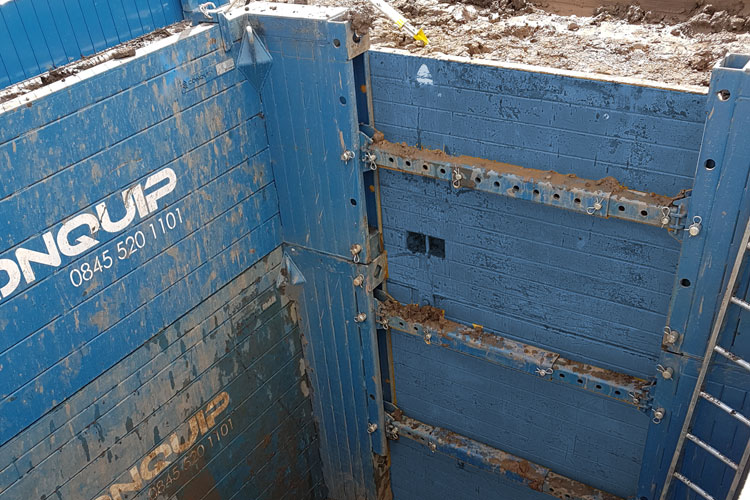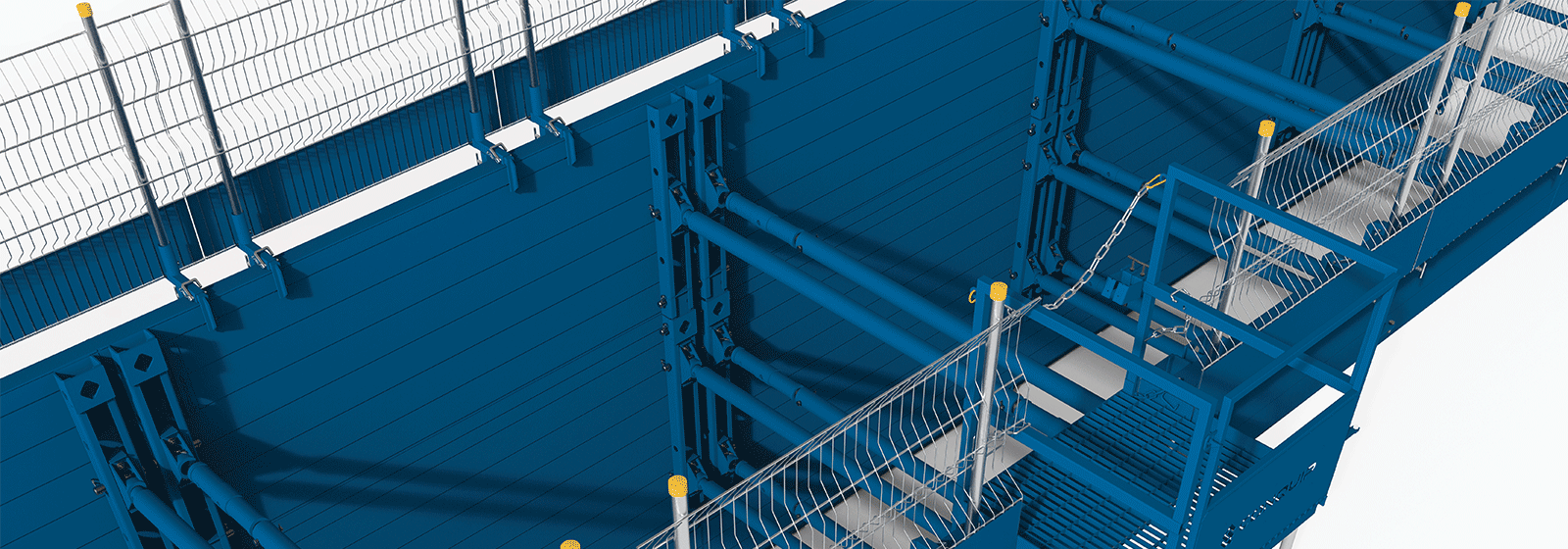Trench Shoring FAQs
12th, October 2023
Trench Shoring is most commonly used in infrastructure projects. In this blog, we delve into the common questions around Trench Shoring, such as, what is trench shoring, what equipment is used, how to install it, at what depth shoring is required and much more.
Essentials you need to know about trench shoring
Quick navigation:

What is Trench Shoring?
The term “trench shoring” refers to methods and equipment, such as shores or props, used for bracing of the walls of a trench during excavation works. Trench shoring is sometimes referred to as trench bracing or trench lining. It is a necessary procedure in order to prevent the trench walls from collapsing into the trench.
When do you need trench support equipment?
Trench shoring equipment is required if the excavation or trench could collapse. Construction workers often need to gain access to trenches to carry out their work. If the trench is at risk of collapse it will pose a risk to construction operatives who need to work in the trench.
What is the 1.2 metres rule?
In older UK health and safety regulations, it stated that any trench that was 1.2 metres depth, or above, should have trench support. Today, the Health & Safety Executive (HSE) affirms that the 1.2 metres rule should no longer be considered, as the need to use trench shoring depends on ground conditions and other risk factors.
So, what depth is shoring required?
In the UK, there is no specified depth that an excavation must be supported*. Current health and safety regulations do not stipulate a depth as it can lead to site teams not paying enough attention to the risks related to a specific excavation, such as:
- Substrate soil type
- Weather conditions
- Proximity to highways
- Distance from plant and other construction works
That doesn’t mean that all excavations must be supported, but it does mean you need someone to assess if an excavation is safe, and what support it needs. The HSE recommend that each excavation project has a temporary works engineer on site. Part of their responsibilities is to interpret ground reports and temporary works calculations, provided by temporary works designers.
*Each country will have specific regulations. For example, OSHA in the United States still specifies a depth that trench shoring must be used, which is currently 5 ft or 1.5 metres deep. However, if the trench is less than this depth, a competent person must determine if a protective system is required.

What does “battering back a trench” mean?
An alternative to trench support is to batter back the trench sides, which is to cut away the sides at 45 degrees, to reduce the risk of collapse. However, this method is less flexible than using trench shoring as it relies on having a large amount of space each side of the ‘trench’ or working area and the trench can still collapse, dependent on the soil type.
How big is the risk?
Depending on conditions, a cubic metre of soil can weigh in excess of 1.5 tonnes. Accidents have happened in trenches of 0.5 metres, for example, a collapse of free-flowing ground, sands or gravels can result in a broken ankle.
In 2016, a large main contractor in the UK was fined £2.6 million after an employee was killed in a trench collapse. The fine is one of the largest seen in the construction sector and it was attributed to the fact that even at a time of so much awareness of the dangers of unsupported trenches, the contractor had still not taken steps to ensure that there was adequate protection.
What equipment is used for trench shoring?
Here is an overview of types of equipment commonly used for supporting smaller excavations and trenches.
Trench Box
A trench box is the most common type of trench lining equipment. It simply consists of steel sidewalls and struts allowing the equipment to achieve a wide range of different working widths and trench depts. To suit deeper trenches, the standard box can be combined with extensions. Conquip standard trench boxes can be combined with up to 2 extensions allowing use with the total working height of over 5 metres. View the product here.
How do you install trench boxes?
Installation of trench boxes doesn’t require workers to enter the trench which makes them very safe and most used for bracing of a trench. Once the box is assembled, it can be lowered into the trench using chain slings. An excavator proceeds with the excavation while adjusting the depth of the box by pushing it down into the trench – so-called ‘dig & push’ technique. Increased safety can also be achieved by installing edge protection to the upper edge of the box.


What are trench plates used for?
Trench plates are often used to refer to trench covers or steel Road Plates, they are not actually used for supporting an excavation.
The road plates are used to conceal trenches or holes within the pavement or road, in order to eliminate hazards. They are not actually used for supporting an excavation, they are more commonly used to provide safe access to pedestrians or vehicle traffic. Manhole Cover Plates are also used in a similar way, but for smaller gaps, such as uncovered manholes.
What is the difference between trench sheets and sheet piles?
Trench sheets are essentially a very lightweight form of Sheet Piles. Trench Sheets are used on smaller projects, sometimes as an alternative to trench boxes. They can be used in conjunction with manhole braces to offer trench support around the construction of a concrete manhole. View the product here.
Sheet Piles are used on much larger projects such as basement propping schemes, cofferdam construction and land reclamation. To find out more about ground engineering services, click here.
Differently, to trench boxes, manhole boxes and conventional shoring, Trench Sheets and Sheet Piles are installed ahead of the excavation itself. The sheets are driven into the ground by an excavator or vibrator hammers, connecting via interlocking profiles, forming a wall. Once sheeting is installed, the excavation can take place.
If you have any questions about what Trench Shoring equipment and services Conquip can provide, please contact us.







